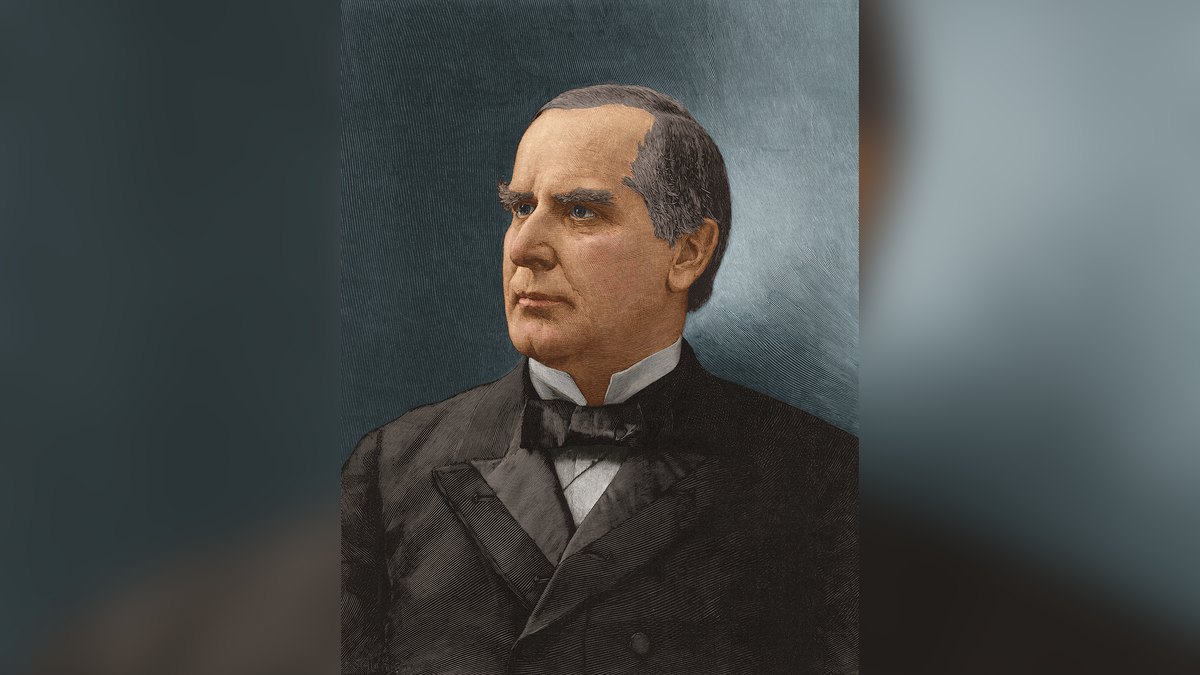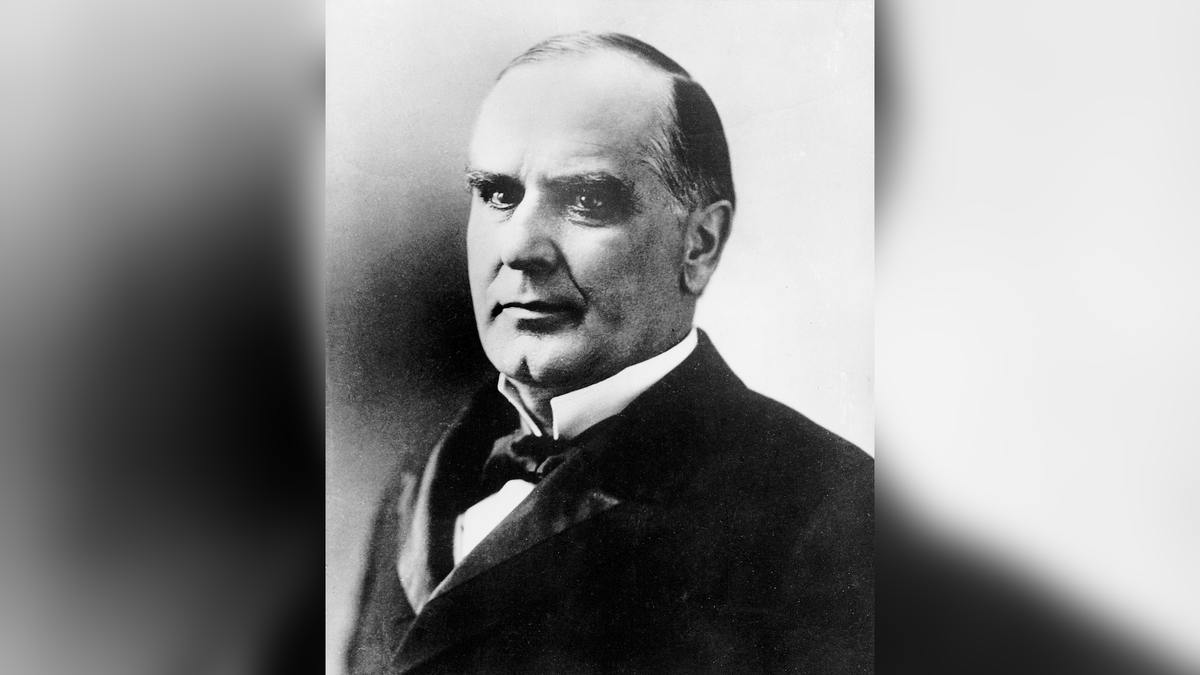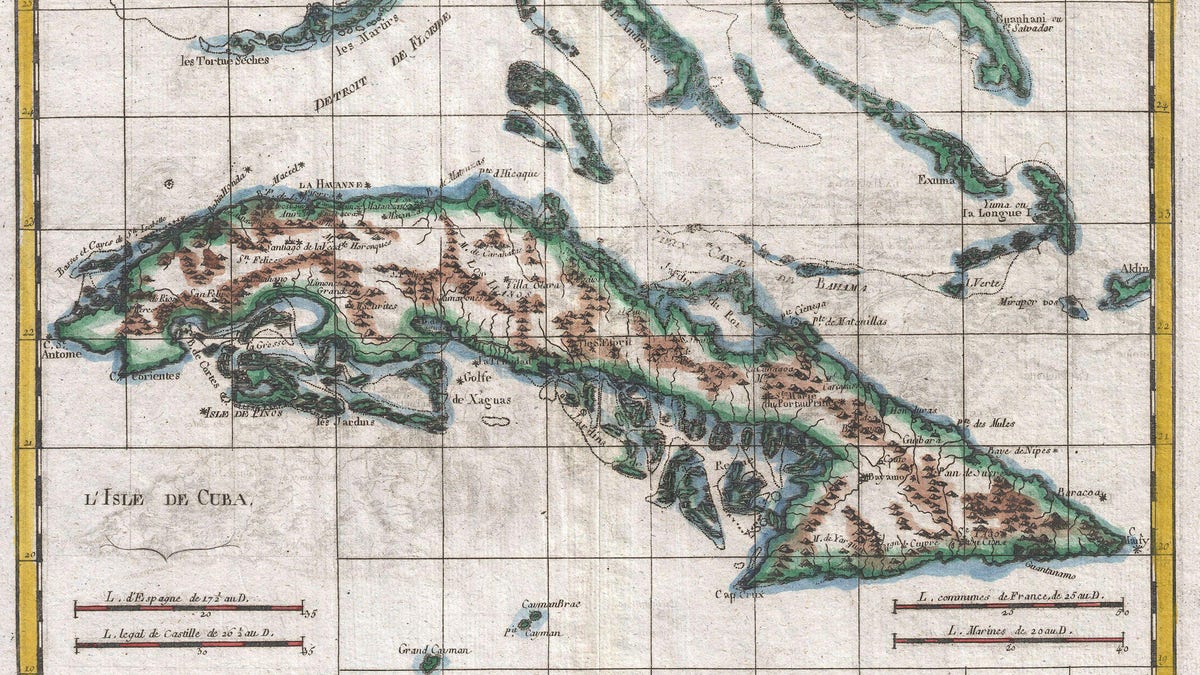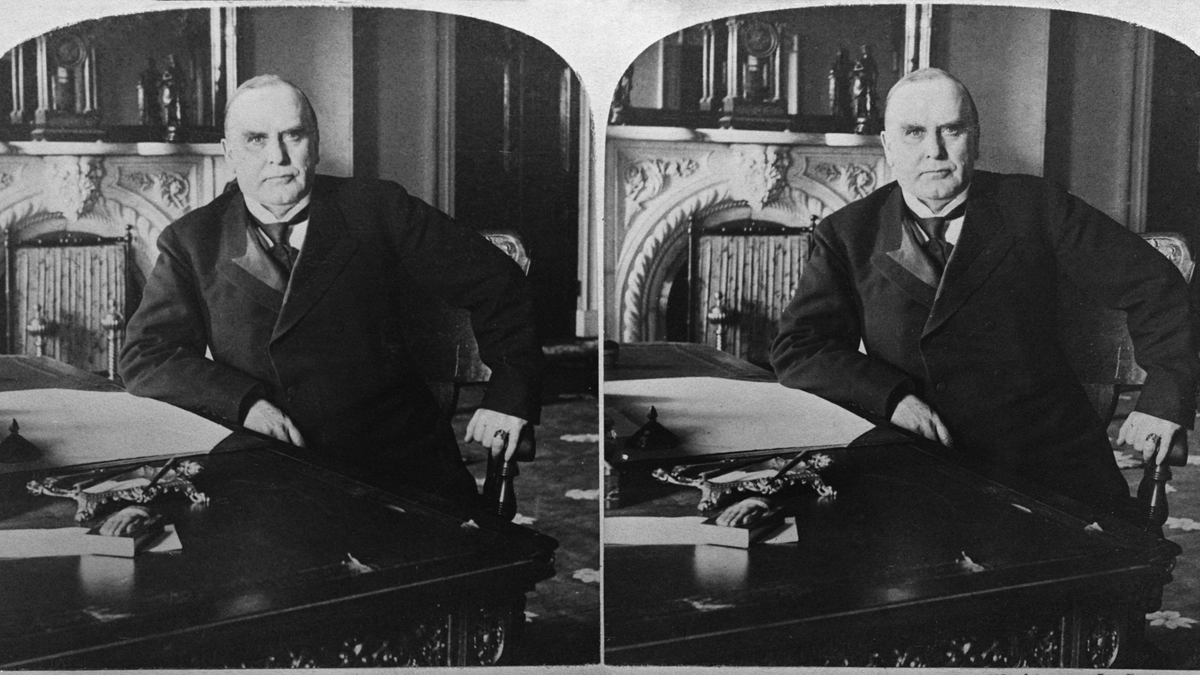US and Philippines carry out biggest military drills to send a message to China and Russia
Fox News chief national security correspondent Jennifer Griffin has the latest on tensions over fears of a Taiwan invasion on 'Special Report.'
On this day in history, April 20, 1898, President William McKinley asked Congress to declare war on Spain.
The declaration requested by the 25th U.S. president was in response to an ongoing conflict between Spain and Cuba, the latter located less 100 miles off the coast of Florida, as that island country struggled for independence from Spain.
On April 20, Congress passed a joint resolution that acknowledged Cuban independence, the U.S. Office of the Historian said.
Congress also demanded that the Spanish government give up control of the island. Congress also indicated that the U.S. had no intention of annexing Cuba.
Congress also authorized McKinley to use whatever military measures he deemed necessary to guarantee Cuba’s independence, the U.S. Office of the Historian noted.
Conflict seemed inevitable, as tensions between the U.S. and Spain had been brewing for some time — and Cuba had attempted to overthrow Spanish colonial rule, according to History.com.

Former U.S. President William McKinley was the nation's 25th president. (Getty Images)
To that end, Cuban rebels "received financial assistance from private U.S. interests and used America as a base of operations from which to attack," that site said.
The Spanish military retaliated with brutal force, causing the death of more than 100,000 Cuban civilians.
Many died in terrible conditions within Spanish concentration camps between 1895 and 1898, according to History.com.
McKinley first tried to avoid conflict with Spain — but American media, including publishing scion Randolph Hearst, chided McKinley as weak, said that site.
The media also tried to incite the public to get behind launching a war, it continued.
ON THIS DAY IN HISTORY, APRIL 18, 1934, FIRST SELF-OPERATED ‘WASHATERIA’ OPENS IN FORT WORTH, TEXAS
Headlines in the U.S. press included "Spanish Treachery!" and "Destruction of the War Ship Maine Was the Work of an Enemy!" according to PBS.org.
The conflict continued to escalate into the spring of 1898.

Former U.S. President William McKinley. The 25th president asked Congress to declare war on Spain. (Getty Images)
On April 11, 1898, two months after the battleship U.S.S. Maine was destroyed by an explosion in Havana harbor, McKinley sent a message to Congress asking for authority to use U.S. armed forces to end the civil war in Cuba, notes the National Endowment for the Humanities website.
"Congress voted to support Cuban independence, to demand the withdrawal of Spanish troops from the island, and to authorize the use of force to achieve those objectives," that site reported.
Spain broke diplomatic relations and declared war against the U.S., says Britannica.com – and Congress formally asserted that a state of war existed.
ON THIS DAY IN HISTORY, APRIL 15, 1865, PRESIDENT LINCOLN PASSES AWAY
"In a whirlwind military campaign, the U.S. Army invaded Cuba and the U.S. Navy destroyed Spanish squadrons in the Caribbean and Manila Bay," the same site said.
"At the request of the Spanish government, the French ambassador in Washington, Jules Cambon, approached the McKinley Administration to discuss peace terms," the United States Office of the Historian noted.

Raynal and Bonne Map of Cuba, West Indies, in 1780. (Sepia Times/Universal Images Group via Getty )
"Ultimately, a ceasefire was signed on August 12, 1898," it continued.
The war officially ended four months later, when the U.S. and Spanish governments signed the Treaty of Paris on Dec. 10, 1898.
Spain also agreed to sell the Philippines to the U.S. for the sum of $20 million.
"Apart from guaranteeing the independence of Cuba, the treaty also forced Spain to cede Guam and Puerto Rico to the United States," that site said.
Spain also agreed to sell the Philippines to the United States for the sum of $20 million.
"The U.S. Senate ratified the treaty on Feb. 6, 1899, by a margin of only one vote," the site says.
William McKinley, born in Niles, Ohio, served as president from March 4, 1897, until his assassination on Sept. 14, 1901.

Former U.S. President William McKinley, above. He was assassinated in 1901 — and is buried in Canton, Ohio. (Getty Images)
Prior to serving as commander-in-chief, he won a seat in Congress at age 34, and was appointed to the Ways and Means Committee, says Whitehouse.gov.
He served in the House for 14 years and was known as an expert on tariffs.
CLICK HERE TO GET THE FOX NEWS APP
McKinley had an "attractive personality, exemplary character and quick intelligence," noted Whitehouse.gov, adding that he was generally on the side of public interests versus private ones.
McKinley died on Sept. 14, 1901, of "complications from bullet wounds" inflicted by Leon Czolgosz, "an anarchist who shot the president during one of his public appearances at the Pan-American Exposition in Buffalo, New York," the Library of Congress said.
CLICK HERE TO SIGN UP FOR OUR LIFESTYLE NEWSLETTER
On Sept. 23, 1901, Czolgosz’s trial began — and in just three days, he was found guilty and sentenced to death.
He was executed on Oct. 29, 1901.
McKinley was buried in Canton, Ohio. A memorial to him opened in that city later that year, according to the Library of Congress.
For more Lifestyle articles, visit www.foxnews.com/lifestyle.

